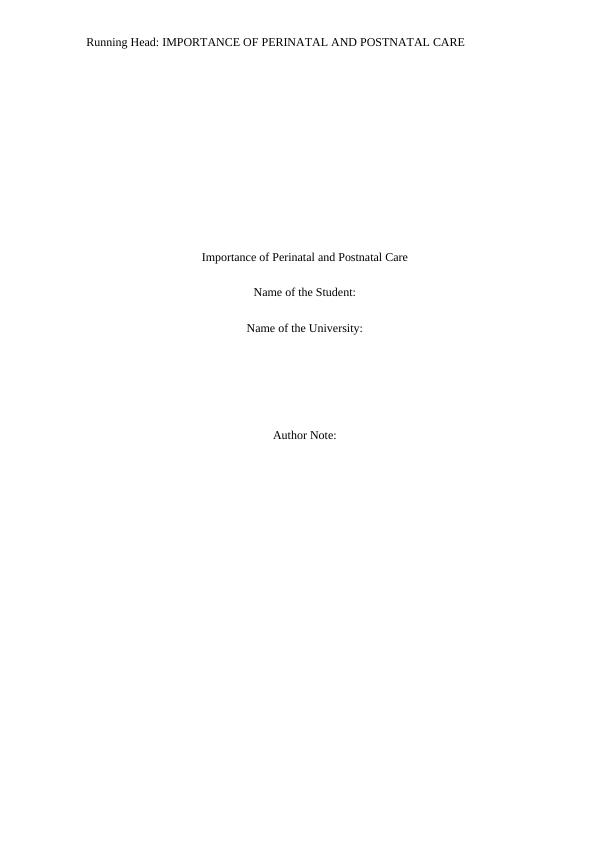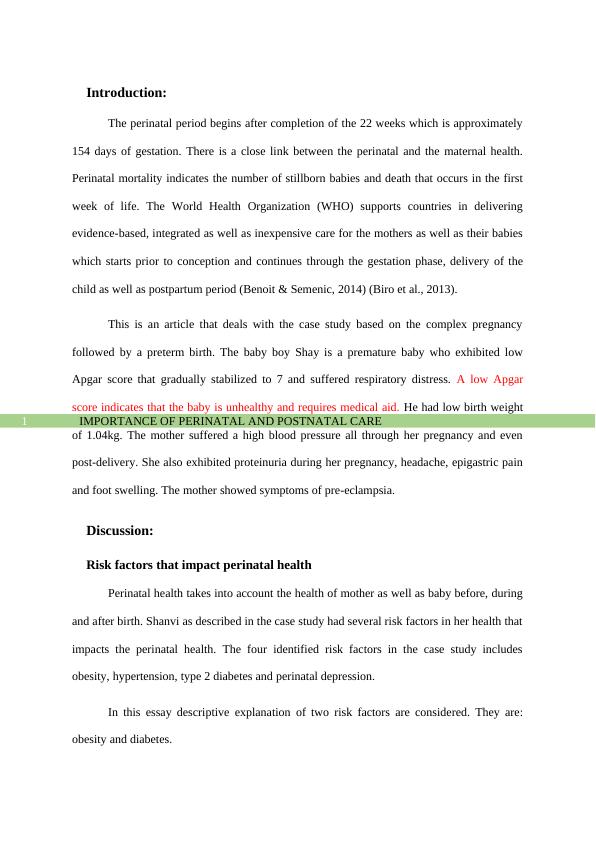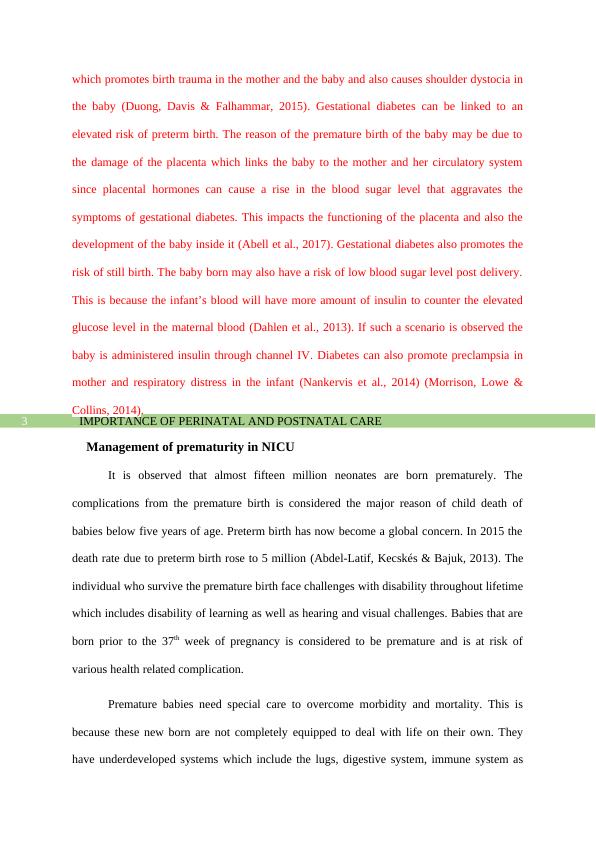Importance of Perinatal and Postnatal Care for Mothers and Babies
This article discusses the importance of perinatal and postnatal care, focusing on a case study of a complex pregnancy followed by a preterm birth and the associated risks and complications. It also highlights the significance of identifying risk factors and providing evidence-based, integrated care for mothers and babies throughout the perinatal period.
Added on 2022-11-22
About This Document
Importance of Perinatal and Postnatal Care for Mothers and Babies
This article discusses the importance of perinatal and postnatal care, focusing on a case study of a complex pregnancy followed by a preterm birth and the associated risks and complications. It also highlights the significance of identifying risk factors and providing evidence-based, integrated care for mothers and babies throughout the perinatal period.
Added on 2022-11-22
End of preview
Want to access all the pages? Upload your documents or become a member.




